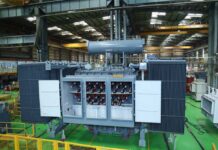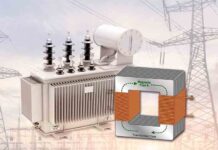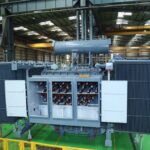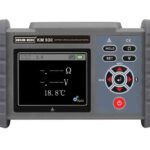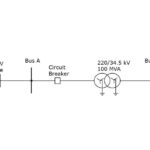
Inrush current is a transient phenomenon that occurs when a power transformer is initially energized. It is characterized by a large surge of current that can reach up to 10-15 times the rated current of the transformer and is influenced by factors such as switching instant, residual magnetism, system impedance and core material properties. This inrush current lasts for a short duration but can cause significant voltage disturbances, mechanical stress on windings, and maloperation of protection relays.
Understanding the causes, characteristics, and mitigation methods of inrush current is essential for ensuring the reliable operation of power transformers and the stability of electrical networks. This study conducts a simulation study of inrush current, flux, and voltage waveforms obtained from two widely used electromagnetic transient simulation tools, EMTP and PSCAD. The findings highlight the strengths and capabilities of each tool, providing users with the flexibility to choose the most suitable platform based on their technical requirements and familiarity.
Simulation details
FIG. 1 illustrates the system model designed to analyze the transformer’s dynamic response during energization conditions. At t = 0.28 sec, the transformer is energized through the circuit breaker, triggering an initial magnetizing current surge. The transformer, featuring 20% impedance (%Z), a YNyn0 vector group, and ONAN cooling, is modeled in EMTP (Electromagnetic Transients Program) and PSCAD (Power Systems Computer Aided Design) to replicate transient system behavior, following OEM specifications that detail the transformer’s electrical and magnetic characteristics.
This study conducts an assessment of inrush current, flux, and voltage responses simulated using EMTP and PSCAD. The simulation results are summarized in the following section.
Simulation results
The simulation of the typical system, as shown in Fig. 1, is conducted using EMTP and PSCAD, with the results presented below.
Inrush Current Profiles
Inrush current in the transformer results from the rapid establishment of magnetic flux in the core upon energization, causing a transient surge in magnetizing current that can exceed multiple times the rated current. The inrush current waveforms simulated in EMTP and PSCAD (Fig. 2 & Fig. 3) exhibit minor variation, indicating strong agreement between the two tools.

(b) PSCAD-derived transformer inrush current waveform during energization…
Figure 2. Comparison of inrush current profiles derived from EMTP and PSCAD…

(b) PSCAD-derived normalized inrush current waveform…
Figure 3. Comparison of normalized inrush current profiles derived from EMTP and PSCAD…
Flux Profiles
The energization of a power transformer results in a highly transient flux distribution, with high peak magnitudes, and waveform asymmetry as depicted in Fig. 4. The flux profiles are consistent with each other, as evident from Fig. 4(a) and Fig. 4(b).
In steady-state conditions, the secondary voltage waveform is typically sinusoidal. However, during the first few cycles after energization, the secondary voltage waveform may exhibit distortion due to transient flux buildup, which is consistently reflected in both, Fig. 5(a) and Fig. 5(b).

(b) PSCAD-derived flux waveforms…
Figure 4. Comparison of flux distribution profiles…

(b) PSCAD-derive secondary voltage of the transformer…
Figure 5. Comparison of secondary voltage profiles derived from EMTP and PSCAD…
Conclusion
Given the comparable simulation outcomes of both tools, their selection is guided by specific project requirements, system complexity, and user proficiency. We are advancing our evaluation of EMTP studies, examining ferroresonance, FMBT, and insulation coordination.

Arvind Mehta is the Founder & Chairman of Elcon Engineers Pvt. Ltd. (EEPL). He received a BE degree in Electrical Engineering from Maharaja Sayajirao University, Vadodara, India in 1973. His specialization is in the field of power system study, design, analysis and providing solutions for industries and utilities. His job experience in Jyoti Ltd. and Tata Consulting Engineers leveraged in the growth of EEPL.

Chinmay Y. Jani received a BE degree in Electrical Engineering from Gujarat University, Ahmedabad, India in 2009 and an M. Tech degree with a specialization in Electrical Power Systems from Nirma University, Ahmedabad, India in 2013. He is currently pursuing his Ph. D. and is associated with Elcon Engineers Pvt. Ltd.


